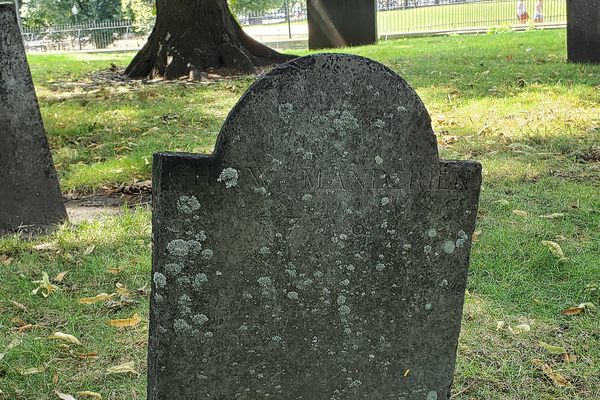AO Edited
Central Burying Ground
American revolutionaries and British soldiers alike are buried here in the fourth-ever cemetery in Boston.
The Central Burying Ground was established in 1756 as the fourth cemetery in Boston, to alleviate crowding from the other three: King’s Chapel, Copp’s Hill and Old Granary.
The oldest burial actually took place in 1749, seven years before this graveyard officially opened, and the last burial took place in 1856. There were 5,000 burials here but there are only 487 tombstones and 282 tombs around the structure known as The Dell.
It’s the least visited of Boston’s old burying grounds, probably because it’s located in a shady part of the Boston Common along Boylston Street and few famous people are interred here. These include the painter Gilbert Stuart, whose painting of George Washington has graced our $1 bills for over 100 years; Jean Baptiste Julien, the noted restaurateur; and Charles Sprague, known in his time as “The Banker-Poet of Boston” and once one of the most famous poets in America. This cemetery was also not as desirable as the city’s other cemeteries for several reasons. It was located furthest from the city’s market center and it contains the graves of many French Roman Catholics.
Also buried here are British common soldiers who died in combat or of disease during the Revolution, foreigners who died while in Boston as well as American patriots from the battle of Bunker Hill and the Boston Tea Party.
In 1836, Mayor Samuel Armstrong’s administration extended Boylston Street to connect with Tremont Street. This required cutting a piece off one corner of the burying ground and eliminating a row of tombs. The bodies that were disturbed are buried in a long barrow, which is known as The Dell.
In 1894, the nation’s first underground subway was constructed under Boylston Street. While digging the tracks, construction crews made a gruesome discovery near the corner of Boylston and Tremont streets: the remains of over 900 British soldiers who perished during the occupation of Boston. The remains were re-buried in a mass grave with this slate tablet and three boundary stones to mark the place:
“Here were interred the remains of persons found under the Boylston St. Mall during the digging of the subway, 1895”
Know Before You Go
The Central Burying Ground can be found on Boylston Street between Charles Street and Tremont Street, opposite Edgar Allan Poe Way (complete with a life-size statue of the man himself) and adjacent to the Boylston Street MBTA stop.





















Follow us on Twitter to get the latest on the world's hidden wonders.
Like us on Facebook to get the latest on the world's hidden wonders.
Follow us on Twitter Like us on Facebook